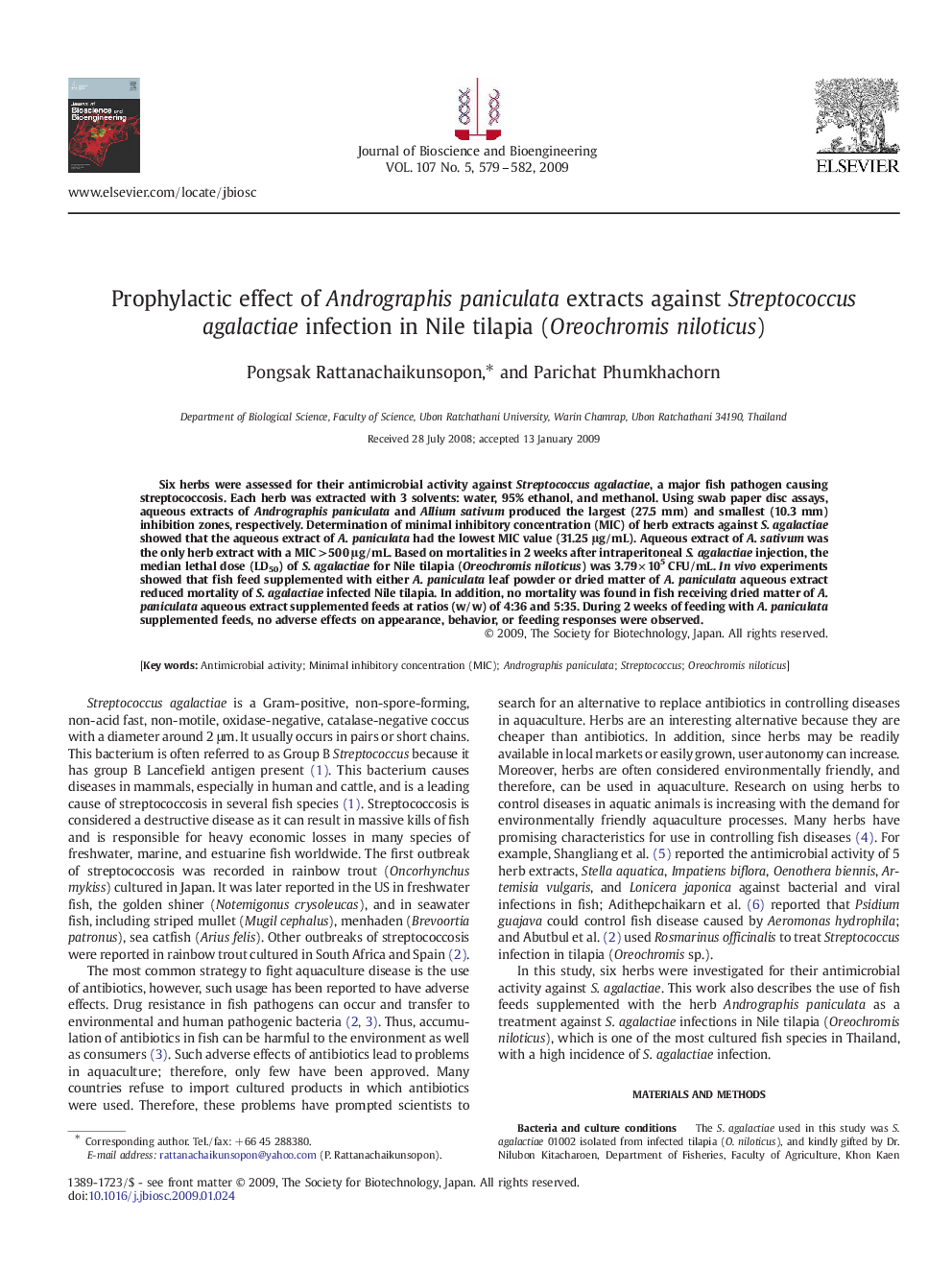| Article ID | Journal | Published Year | Pages | File Type |
|---|---|---|---|---|
| 22191 | Journal of Bioscience and Bioengineering | 2009 | 4 Pages |
Six herbs were assessed for their antimicrobial activity against Streptococcus agalactiae, a major fish pathogen causing streptococcosis. Each herb was extracted with 3 solvents: water, 95% ethanol, and methanol. Using swab paper disc assays, aqueous extracts of Andrographis paniculata and Allium sativum produced the largest (27.5 mm) and smallest (10.3 mm) inhibition zones, respectively. Determination of minimal inhibitory concentration (MIC) of herb extracts against S. agalactiae showed that the aqueous extract of A. paniculata had the lowest MIC value (31.25 μg/mL). Aqueous extract of A. sativum was the only herb extract with a MIC > 500 μg/mL. Based on mortalities in 2 weeks after intraperitoneal S. agalactiae injection, the median lethal dose (LD50) of S. agalactiae for Nile tilapia (Oreochromis niloticus) was 3.79 × 105 CFU/mL. In vivo experiments showed that fish feed supplemented with either A. paniculata leaf powder or dried matter of A. paniculata aqueous extract reduced mortality of S. agalactiae infected Nile tilapia. In addition, no mortality was found in fish receiving dried matter of A. paniculata aqueous extract supplemented feeds at ratios (w/w) of 4:36 and 5:35. During 2 weeks of feeding with A. paniculata supplemented feeds, no adverse effects on appearance, behavior, or feeding responses were observed.
